How do you learn hands-on medical skills during a pandemic?
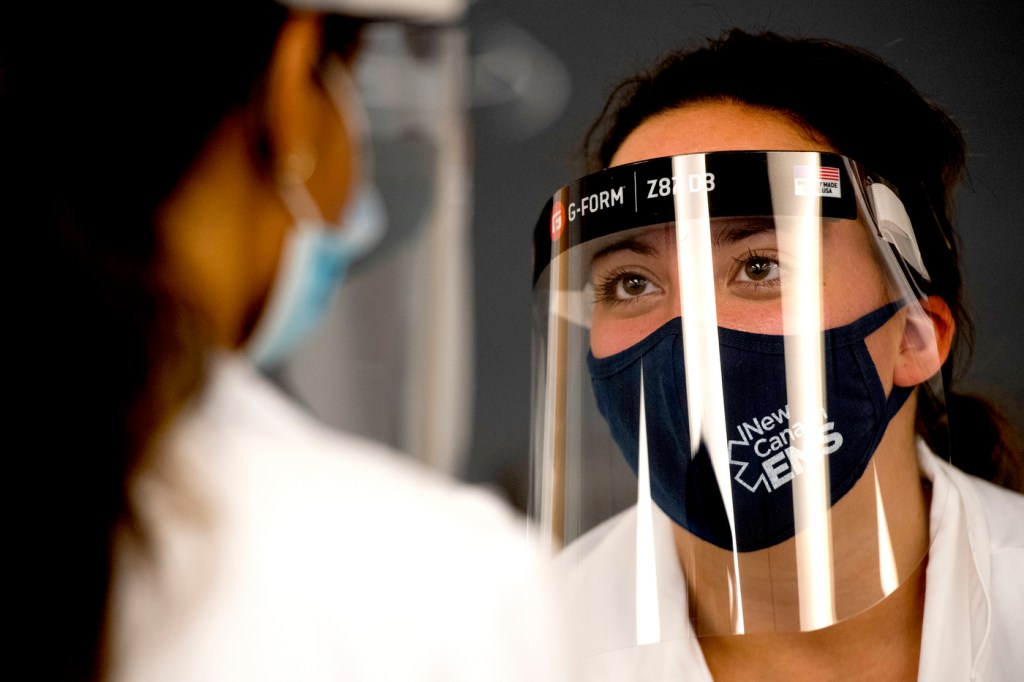
Clad in masks, face shields, and gloves, a dozen students in Northeastern’s physician assistant program begin to pore over each other’s hands, arms, neck, and scalp—their first hands-on practice conducting skin examinations. Six more students begin the same process without all the protective equipment; their patients are family members, friends, and partners, and their exam spaces are living rooms, bedrooms, and home offices.
Despite this being their first physical examination lab—orientation started on Monday—the professor’s introduction is brief and the students don’t hesitate. They already know what to do.
And that’s by design, says Carey Barry, who directs Northeastern’s Physician Assistant Program.
“We’ve been meeting regularly as a faculty and discussing ways that we can make changes in our curriculum as a whole and ways that we can shift things,” she says. “We’re increasing the amount of videos and preparation that students can do before they come to in-person sessions, so that we can better optimize their in-person time.”
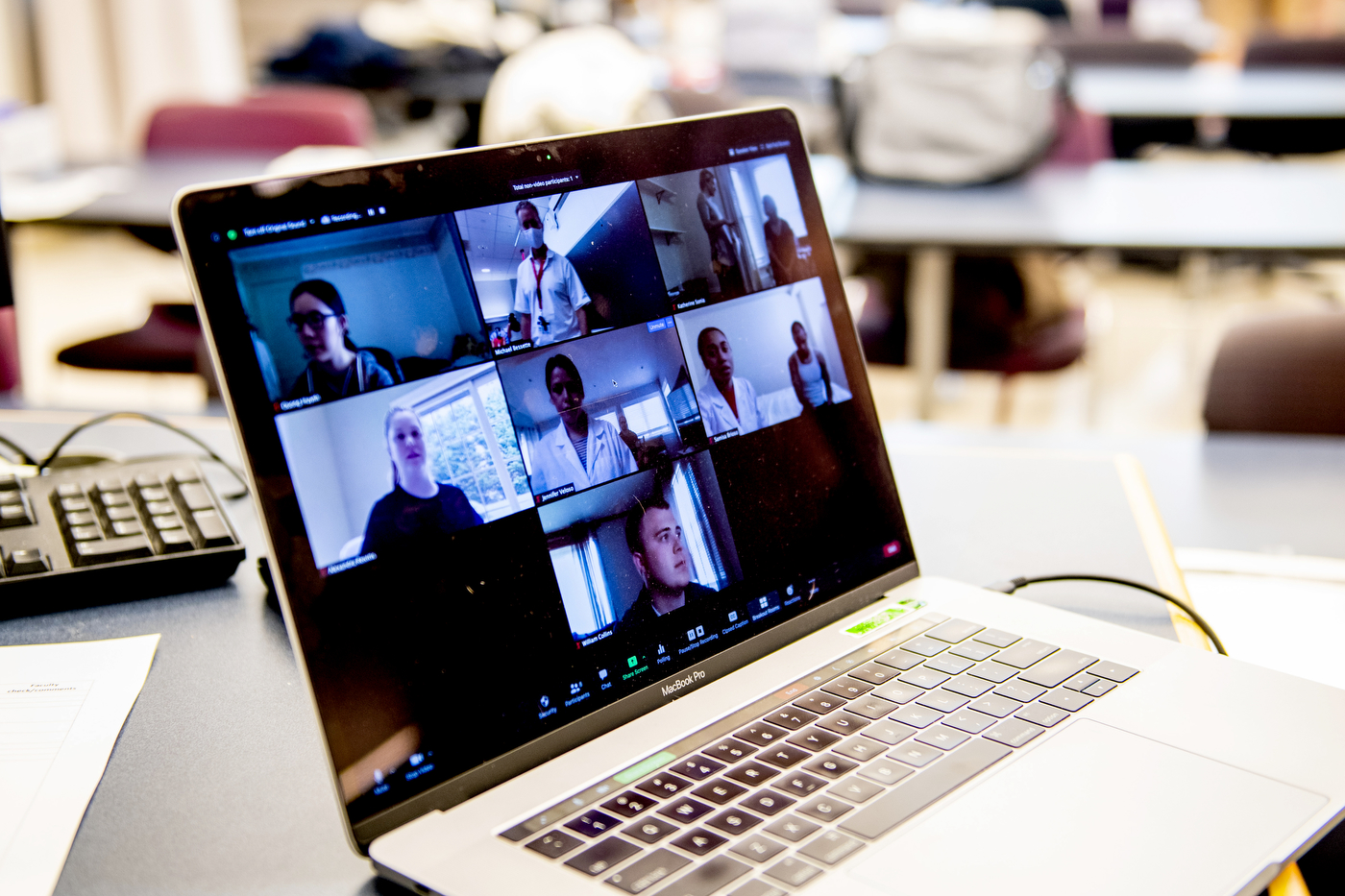
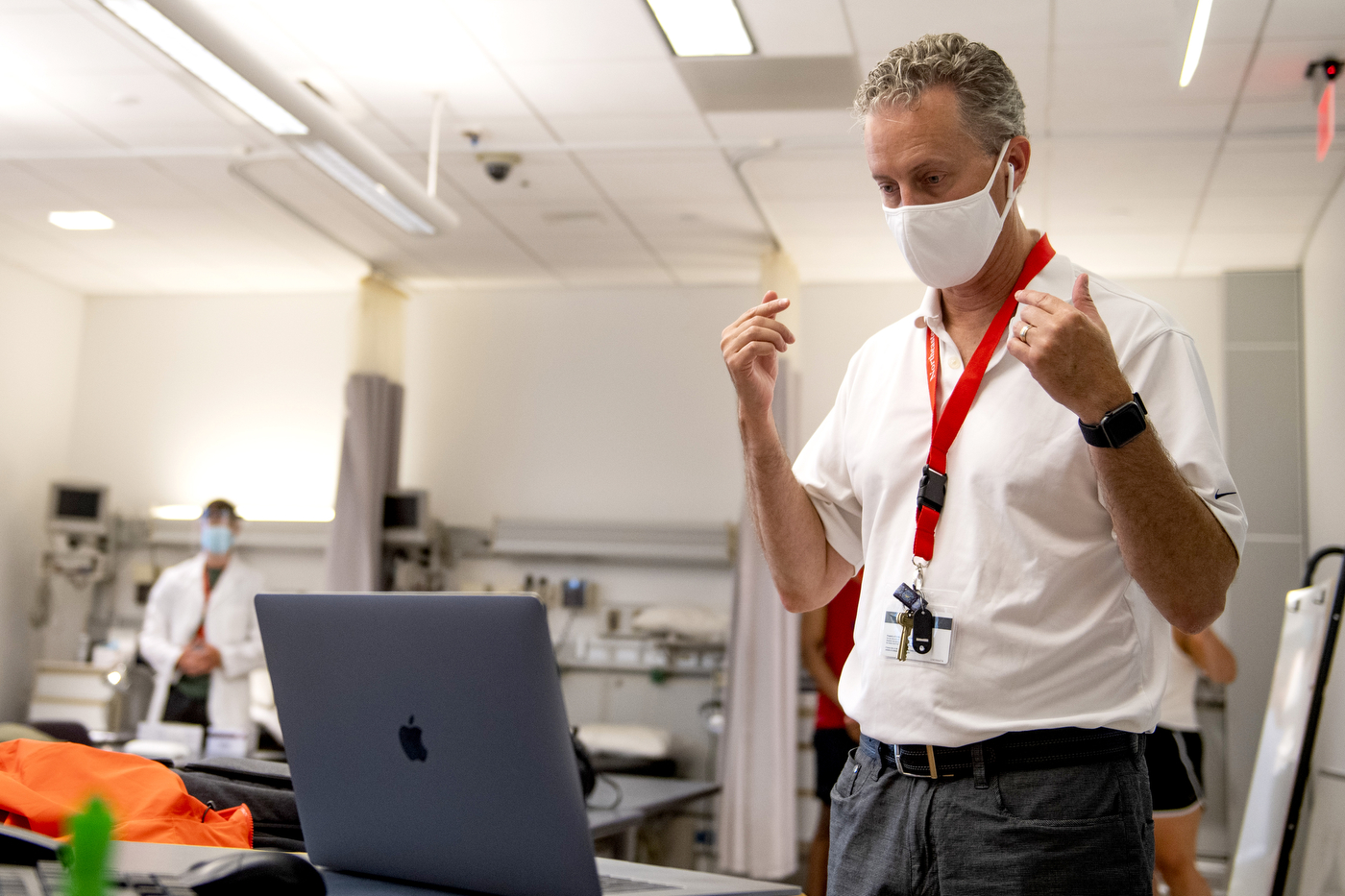
In order to promote student safety during the pandemic and reduce classroom density, Northeastern is using a hybrid teaching model, called Hybrid NUflex, which allows students to participate in class remotely or in person. While physical examination skills must be assessed in person, they can be learned and developed at home, with instructor guidance over Zoom or Teams.
“Our students are learning to be healthcare providers; they’re frontline providers that will be performing these skills,” Barry says. “If they’re increasing that preparatory work when they’re in these virtual lab sessions, then when we come on campus, they’re able to get smaller, more specific feedback.”
When students are in the lab there are times when they need to be in close proximity—you can’t examine someone’s scalp from six feet away—so they are taking precautions beyond simply wearing a mask. The university is providing gowns, gloves, and face shields—the same protective equipment that healthcare professionals are wearing in hospitals.
The students are also divided into smaller groups to attend in-person sessions, and those groups will remain the same throughout the semester, reducing the number of people with whom students could potentially be in contact.
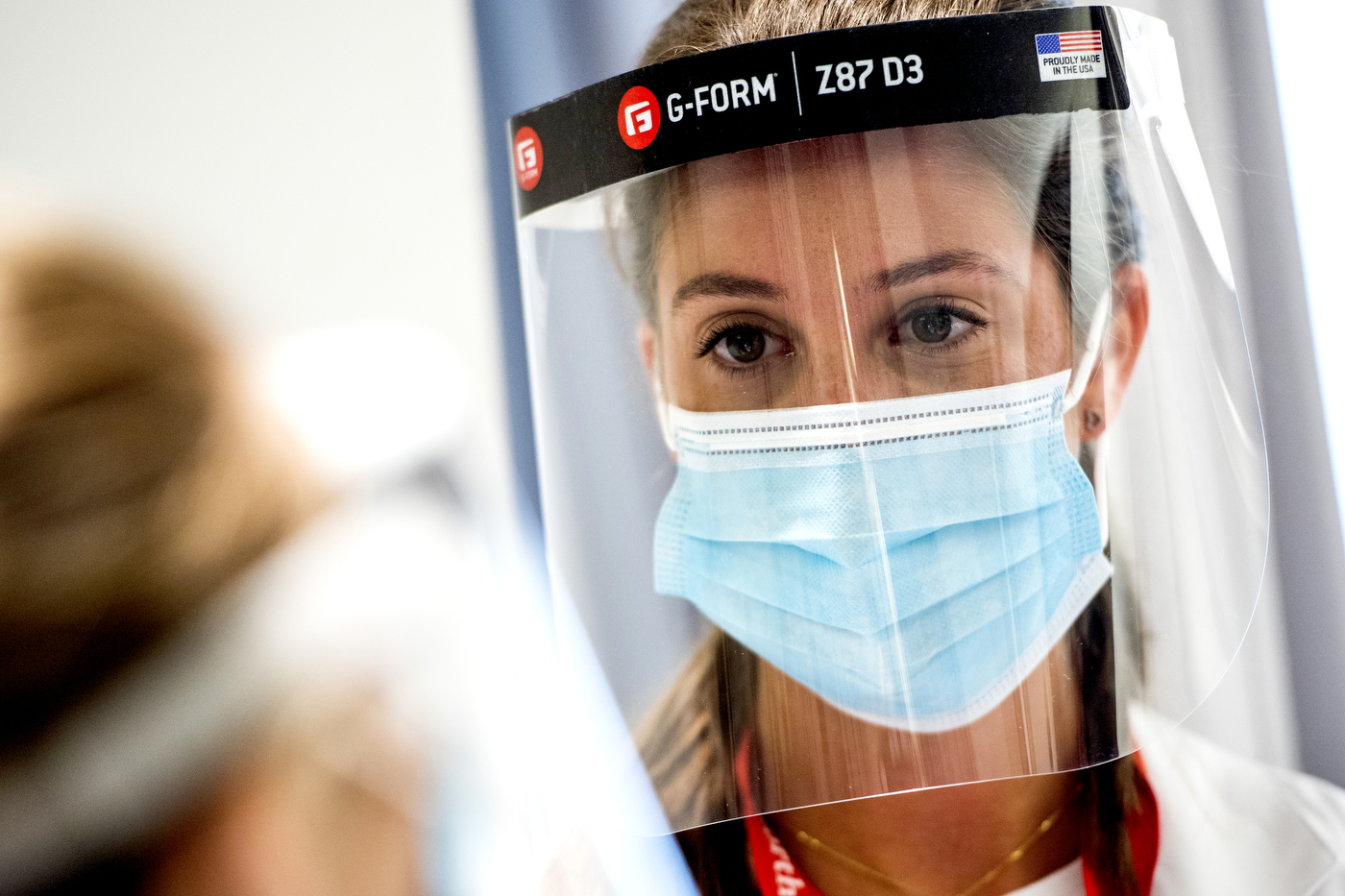
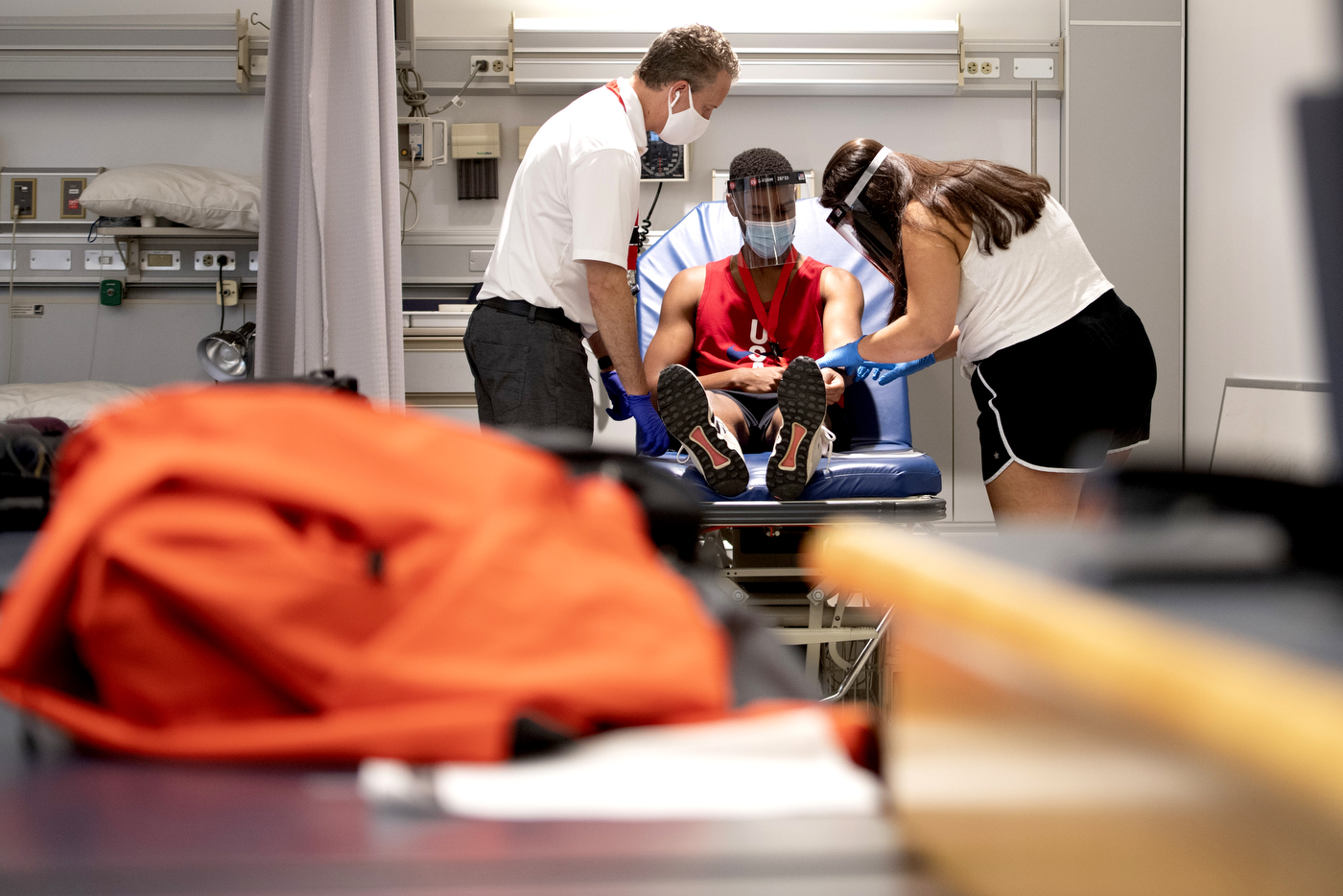
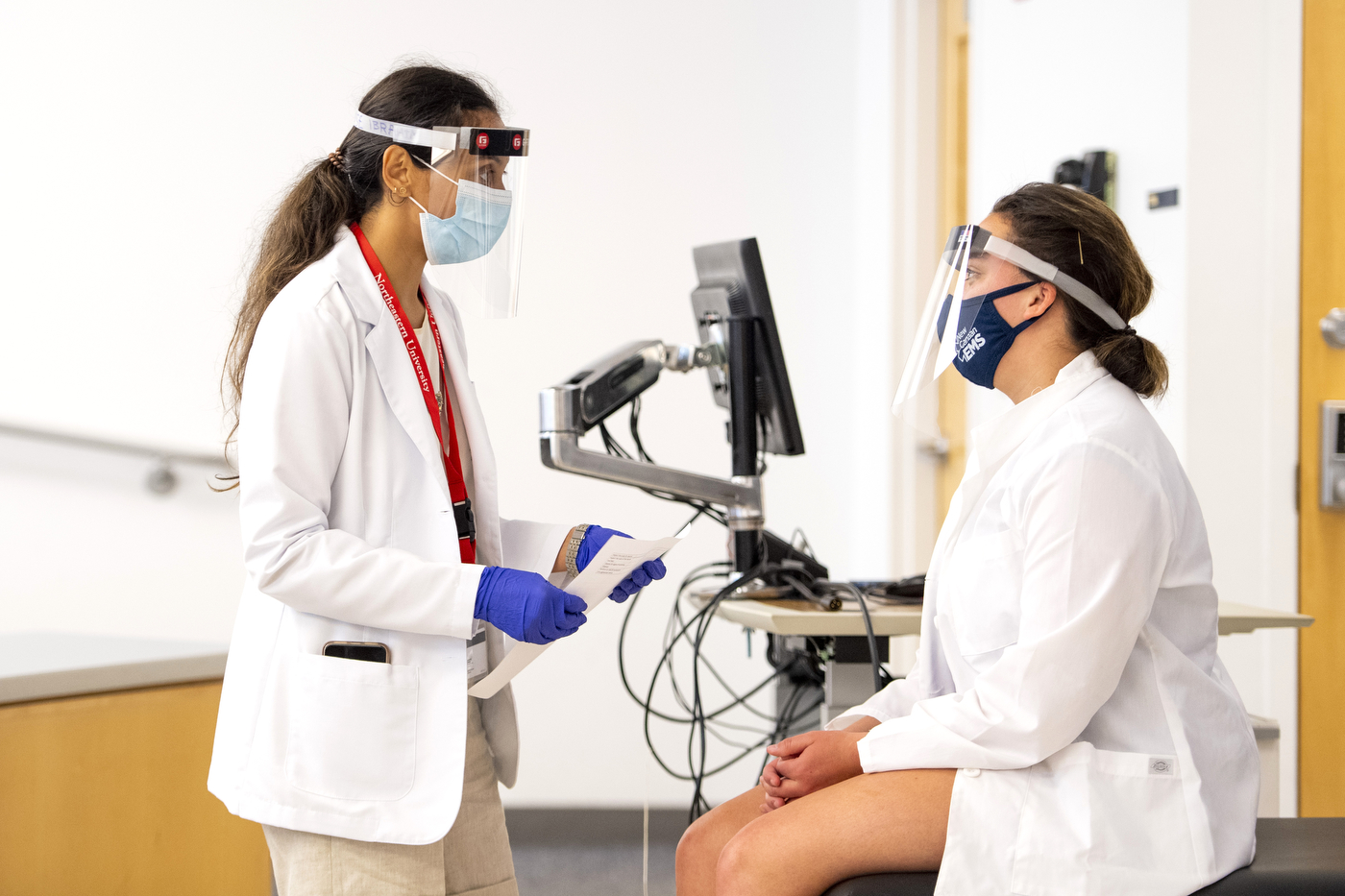
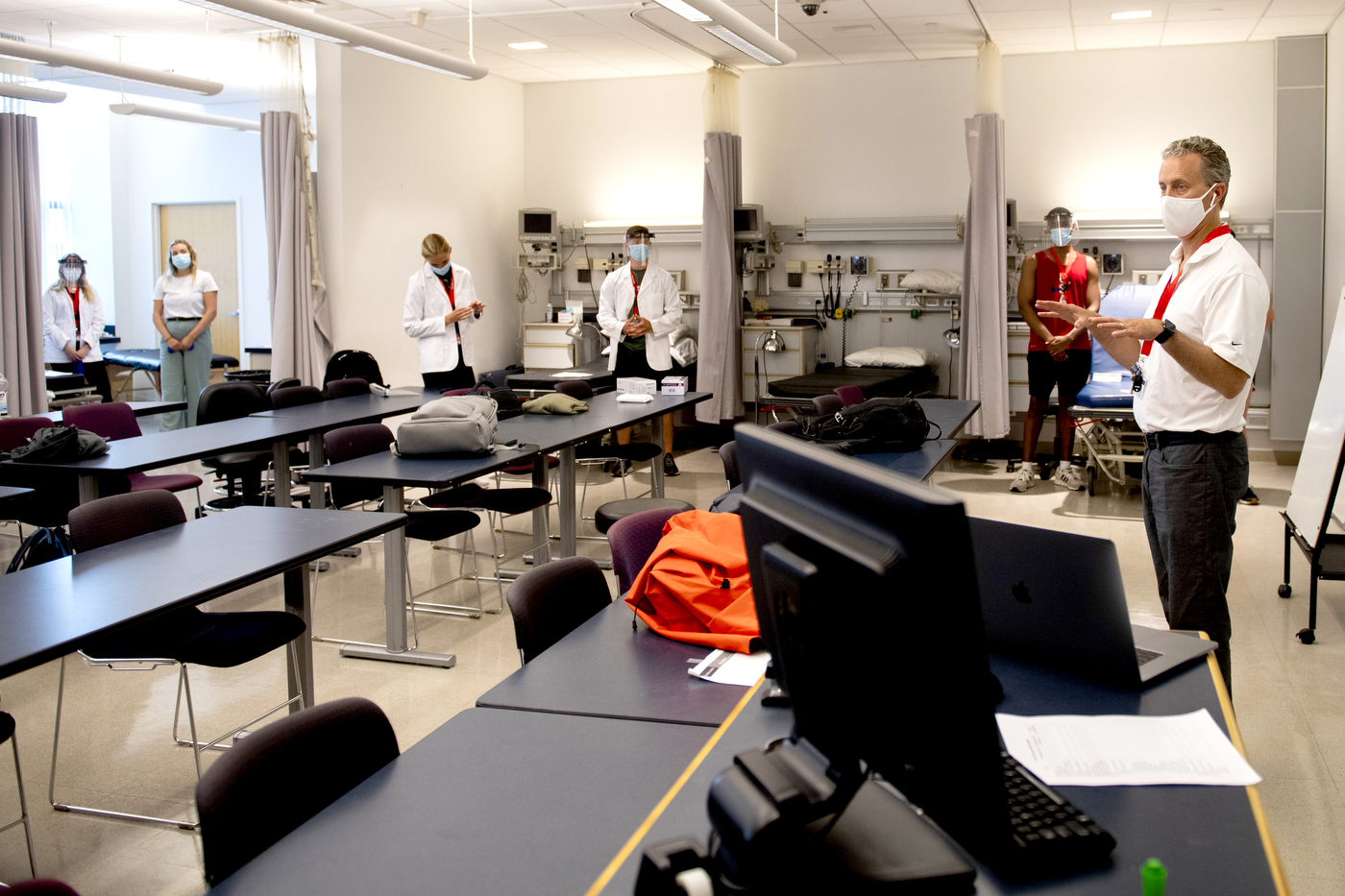
“We are being very thoughtful ahead of time of how our students are going to interact with each other in these sessions and how we’re going to optimize their safety,” Barry says. “We’ve come up with very comprehensive plans, and we’ve worked collaboratively with the university to make sure that we’re doing the best for our students.”
That same care has gone into structuring lectures to ensure students joining remotely are included and supported, Barry says. In particular, the breakout room feature in Zoom has allowed instructors to foster small group discussions between students in any location.
While these changes were necessitated by the pandemic, some of them, such as the opportunity to develop basic exam skills at home, may stick around once we no longer need to wear masks everywhere.
“It gives students flexibility,” Barry says. “These options are great for students who are adult learners in graduate school.”
For media inquiries, please contact media@northeastern.edu.




